Singlefin, thruster, seagrass - how to find the right fin length for your freestyle waveboard
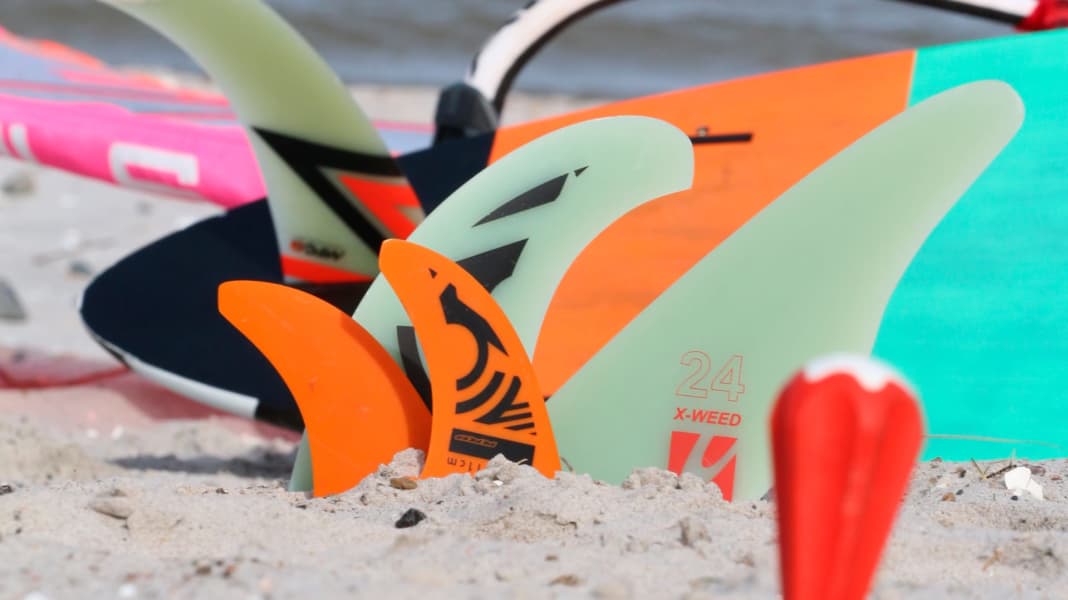
Bump & jump, freestyle wave, crossover - the possible uses of these all-rounders are as varied as the terms for this class of board. In sizes between 75 and 115 litres, they can be used as a strong wind board for heating up flat water, as a wave board in the Baltic Sea wave, as a bump & jump substitute for jumping and looping or even for basic freestyle manoeuvres.
Our test experience shows that there are big differences within this board class and that the manufacturers sometimes set their priorities very differently. This can be seen not only in the shape, but above all in the fin equipment supplied. Single fins or thrusters (three-fins) are available on the market. In the vast majority of cases, you have both options, as freestyle waveboards supplied as single fins usually also have three fin boxes installed.
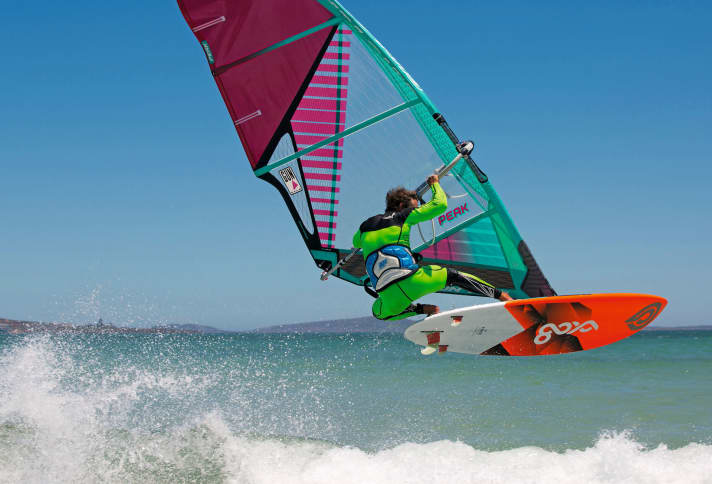
If you want to extend the range of use of your board with a second fin set-up, you are faced with the following questions:
- What are the general benefits of switching between thruster and singlefin?
- What fin sizes should the alternative fin set have?
- What do I need to consider when choosing seagrass fins?
Singlefin & Thruster - why the change makes sense
Fins have a massive influence on the planing performance, manoeuvrability and control of a board and, if set up correctly, extend the range of use. As a general rule, omitting the side fins (close the side boxes!) and replacing the thruster centre fin with a larger single fin improves performance:
- Planing, gliding through wind holes
- Speed in the lower and medium wind range
- Lift at the jump
- Freer, sportier driving experience
- Suitability for large sail sizes
A thruster set-up with a significantly shorter centre fin and small side fins has been improved:
- Control in strong winds due to a deeper water position of the board
- Suitability for small sail sizes
- Turning characteristics in manoeuvres and when riding waves
- Lateral support (through the side fins) when riding waves
How to find the right fin length
The performance and manoeuvrability of the fins depend not only on the profile, but also on the surface area and length. The most important factor here is the fin length - the longer the fin, the higher the leverage and the more lift (= glide performance) is generated.
As a blanket statement along the lines of "when switching to thrusters, simply always fit fins that are three centimetres smaller" doesn't work in practice and different gradations make sense depending on the board size, we have created a graphic that shows the average combinations. This should save you from making the biggest mistakes when buying fins.
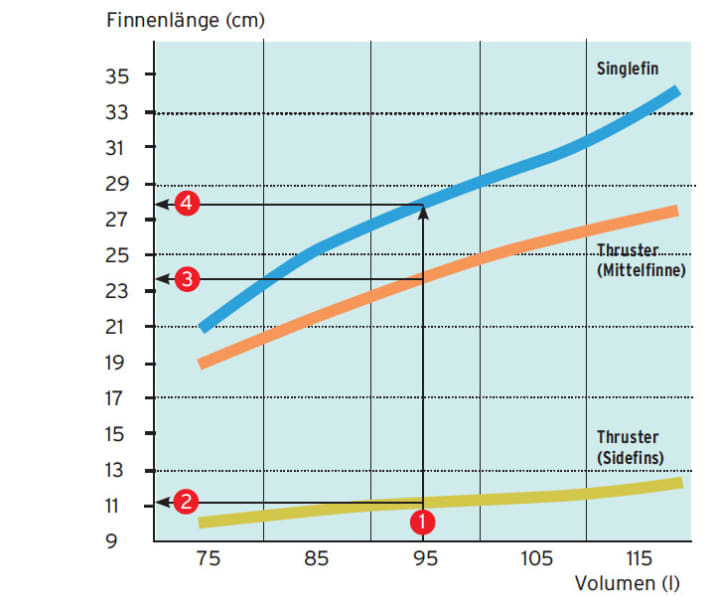
An exampleYou are looking for fins for your 95 litre board? Draw a vertical line at this point (1). Where this line crosses the corresponding lines of the fins, draw a horizontal line to indicate the appropriate size. In this case, our recommendation ranges would be: single fin with 27-29 centimetres (4) // thruster with 23-25 centre fin (3) and side fins with 11-13 centimetres (2).
Because body weight always plays a role, lightweights (<70 kilos) should always tend towards the lower end of the recommended range (in this example: single fin 27, thruster centre fin 23, side fins 11). Heavy surfers (>90 kilos), who inevitably ride larger sails in the same wind range, tend to orientate themselves towards the upper end of the recommended range (29/25/13). If you change as described, you also shift the range of usable sail sizes upwards (single fin) or downwards (thruster) by around 0.3 to 0.5 square metres.
Read on to find out what you need to consider when choosing the right seaweed fin.
###new-page###
Seaweed salad
In summer, you can't do without a seaweed fin at many European spots. Finding the right size is a real problem for many surfers - considering that you can quickly have to fork out 150 to 200 euros for three seagrass fins for a thruster, a bad purchase hurts twice as much.
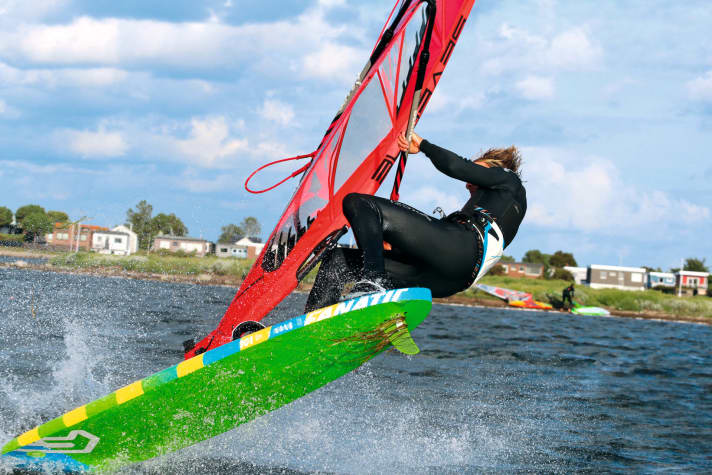
Due to their flatter angle of inclination, seagrass fins have significantly more surface area with the same draught. In addition, the pressure point of the fin is further back, which results in certain changes to the handling: for example, if you replace a 26 mm centre fin with a seagrass fin of the same length, it not only has 25-35 percent more surface area, depending on the brand, but the pressure point is also several centimetres further back. The result: comparable performance, but noticeably poorer turning, e.g. when riding waves. If you want to keep the turning characteristics constant instead, you would have to switch from the 26 to a seagrass fin with only 20 to 22 centimetres, but this would then have noticeable disadvantages in terms of planing performance, speed, upwind performance and suitability for large sails. Therefore, after our tests with different sized fin setups, we have come to the following recommendation, which represents a suitable compromise for freestyle waveboards - the loss of planing performance remains within limits, as does the reduction in turning ability.
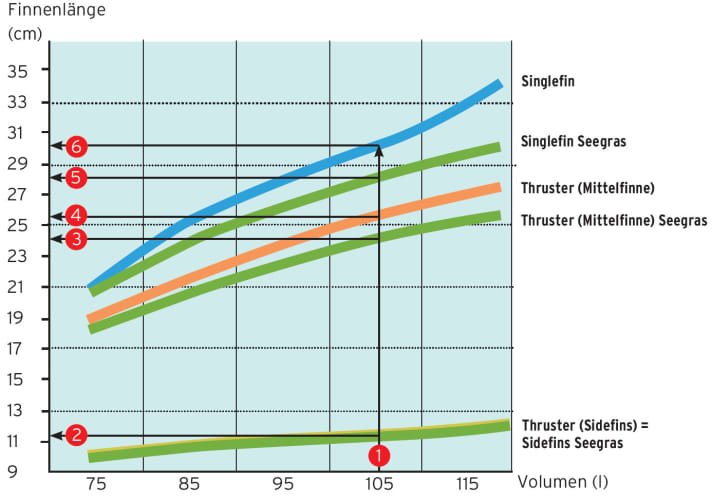
One example: You are looking for seagrass fins for your 105 litre board (1). In this case, our recommendation ranges would be: Singlefin with 29-31 centimetres (6) // Singlefin seagrass with 27-29 centimetres (5) // Thruster with a centre fin of 25-27 centimetres (4) and sidefins with 11-13 centimetres (2) // Thruster seagrass with a centre fin of 23-25 centimetres (3) and sidefins with 11-13 centimetres (2)
Even with these recommendation ranges, lightweights (<70 kilos) tend towards the lower end of the range, while heavy surfers (>90 kilos) stick to the upper end of the recommendation range.
surf tip: If you want to keep things simple, save yourself the "normal" side fins and simply use your small seagrass side fins all year round - this saves money and doesn't reduce the fun of surfing in any way! In contrast to the large centre fin, the type of side fin has no noticeable detrimental effect on either planing performance or turning characteristics.

